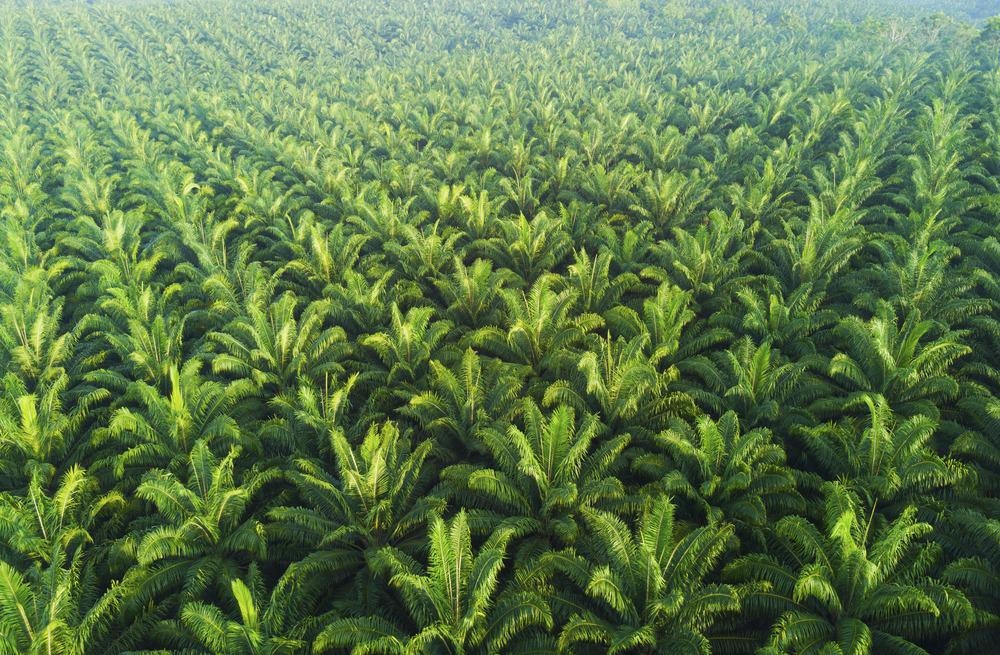Available as a pre-proof in the Journal of Environmental Chemical Engineering, researchers present a thorough overview of current achievements in oil palm-based lignocellulosic biomass, from its initial separation, characterizations, and applicability.

Study: Oil Palm-Based Nanocellulose for a Sustainable Future: Where Are We Now?. Image Credit: nelzajamal/Shutterstock.com
Finally, the obstacles and prospects for a future study about the production of nanocellulose-based products are comprehensively explored to usher in a new era in the development of sophisticated nanomaterials from palm oil for a variety of industrial uses.
Palm Oil Biomass
In Malaysia, the palm oil sector is the main producer of bioenergy, with a considerable volume of biomass waste created each year and only a tiny percentage turned into value-added goods.
The rest is either burned or left to decay on the farms, releasing harmful gases and causing serious pollution problems.
Farming by-products created during processing, planting, and trimming processes in palm oil production are referred to as oil palm biomass.
Trunks, stems, fronds, fruit peels, endosperm fibers, nutshells, and mill discharge are the most common types. Biomass from oil palms may be generated both on the farm and in oil palm cultivation and processing.
Cellulosic Compounds of Oil Palm Biomass
Cellulosic compounds are abundant in oil palm biomass.
The composition of the bulk oil palm is mostly made up of cellulose, lignocellulose, and lignin. These lignocellulose materials are stable, recyclable, and ecological.
Based on the environmental amiability and appealing characteristics such as non-toxicity, lightweight, processability, biodegradability, good thermomechanical properties, recyclability, and ease of alteration, cellulose has recently become a forefront of all gaze within the scientific community.
Nanocellulose
Nanocellulose is a unique category of nanometer-sized biopolymer that is generating an organic manufacturing renaissance in the twenty-first century for a wide range of transdisciplinary technologies including transportation, healthcare, medicines, membranes, 3D printing, solar cells, and wearable electronics.
This is due to nanocellulose's unique features, which include high reinforcement rigidity similar to Nylon and metals, a huge surface size, exceptional refractive qualities, tunable crystalline structure, and ease of surface modification.
Nano-cellulose Production from Oil Palm Biomass
The methods used to produce nanocellulose from biomass feedstock have a significant impact on the form and characteristics of the resulting materials. Researchers discuss the following strategies in their review paper.
Mechanical Treatment
Mechanical treatments relate to a disintegration procedure that isolates
Carbon fibers from biomasses by dissolving the fibers along their axial direction. The cellulose fibers will be decomposed into their substructural fibrillar, with a diameter of 10 nanometers to a few 100 nm and micrometric length.
Highly pressurized disintegration, micro condensation, and milling are some of the traditional mechanical procedures for nanocellulose separation.
Chemo-Mechanical Treatment
Pristine cellulosic fibers from oil palm biomass may also be chemically hydrolyzed at high temperatures to generate nanocellulose.
During intense chemical treatment, hydroxide ions enter flexible cellulose strands, cleaving glycosidic linkages and forming nanocrystals.
To stop this reaction, the CNCs solution is diluted with distilled water. Extra acid is generally separated by centrifugation and rinsing. Filtration is used to remove non-reactive sulfate compounds and soluble carbohydrates from the residue.
Enzymatic-Mechanical Treatment
The mechanical method for nanocellulose separation is expensive and energy-intensive, while the traditional chemical process of acid treatment is caustic and produces toxic waste.
As a result, biological methods such as enzymatic treatment are recommended since they are more ecologically friendly, consume less energy, and produce non-toxic effluent because they allow for softer degradation conditions than acid treatment.
Conclusion and Future Recommendations
Despite the palm oil sector's significance to Malaysia's economic prosperity, massive volumes of oil palm biomass were generated in Malaysia.
Thus, the utilization of waste materials of oil palm biomass is a novel concept with enormous economic and environmental advantages. Similar to combustion and decomposition, using nanotechnology to manufacture nanocellulose from oil palm biomass has a wide range of potential applications.
Before the formal introduction of nanocellulose-based products into society, several issues must be overcome by researchers and industry specialists.
Due to the high adherence of hemicellulose, lignin, and other components in the cellular membrane, pre-treatment of biomass feedstock is critical to remove any non-cellulosic compounds. However, the traditional pre-treatment method, which often requires numerous processes such as the Soxhlet method, enzymatic hydrolysis, and bleaching, is time-consuming, uses hazardous chemicals, and produces effluent.
In the coming years, palm oil-derived nanocellulose in scientific research, as well as industrial usage as state-of-the-art nanocomposites, are expected to rise at an accelerating rate.
This might usher in a new era of innovative and new materials in the future, averting the environmental disasters brought on by the dumping of oil palm biomass wastes.
Reference
Lim, H.J. et al., (2022) Oil palm-based nanocellulose for a sustainable future: Where are we now? Journal of Environmental Chemical Engineering, p.107271. Available at: https://www.sciencedirect.com/science/article/abs/pii/S2213343722001440
Disclaimer: The views expressed here are those of the author expressed in their private capacity and do not necessarily represent the views of AZoM.com Limited T/A AZoNetwork the owner and operator of this website. This disclaimer forms part of the Terms and conditions of use of this website.